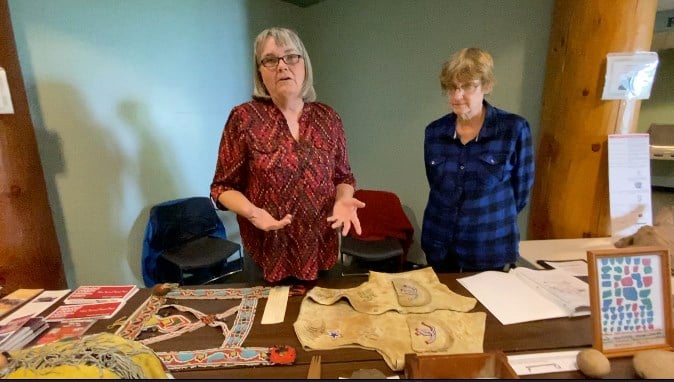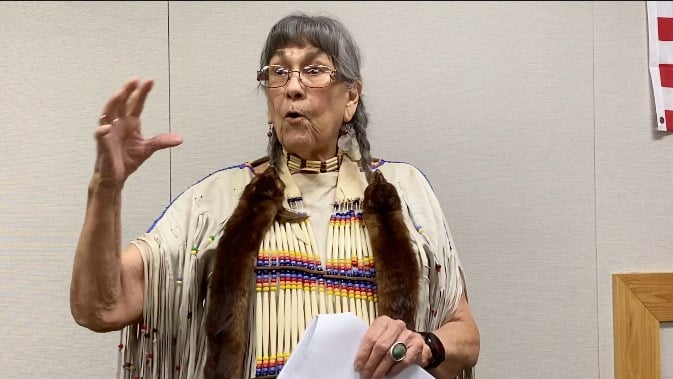NEBRASKA CITY – The Native American Artifact Show this weekend told the story of people who lived along the Missouri River before the 1830s and a possible wedding feast involving the explorer Meriwether Lewis.
Mary Howery and Sandra Bengtson of the Fremont County Historical Society said they have been coming to the show for the past four years with portions of displays from the museum in Sidney.
They displayed stones, arrowheads and pottery found in Fremont County, as well as a buffalo skull and a mastodon tooth.
Bengtson: “Many things were found around the Thurman or the Knox area – if you know where Knox was once upon a time –
Howery: “Yeah, right along the bluffs, there apparently was a regular Indian trail, where Bluff Road is now.”
Howery said there are many more artifacts on display at the museum in Sidney, including the tusks to go with the mastodon, which were found at a Thurman rock quarry.

While their collection is small compared to Mills County, they have a piece of flint that native Americans mined from out of the bluff.
It is unclear which tribes created the artifacts, the Potawatomi, Wichita, Omaha and Ioway were said to have passed through the area.
Nebraska Humanities speaker Joyzelle Gingway Godfrey offered an explanation for a blond-haired Indian girl among the Sioux after Lewis and Clark and their expedition passed through near Pierce, S.D.
She said the events include a meeting with warriors who had stolen a expedition horse and the impressed reaction to Lewis when he drew a sword in a threat although he was greatly outnumbered.

She said the act of valor earned Lewis a welcome into the Sioux camp, where he took notice of a girl. The evening including carrying Lewis and William Clark on a buffalo rug, ceremonial food and singing songs that Godfrey linked to a marriage ceremony.
Godrey: “As in this case this evening, voluptuous and indecent, because the community was teasing Meriwether Lewis and his new bride.”
Most of the artifacts on display this weekend were not so specific in detail, but still gave accounts of Native American life.
The Fremont County Historical Society displayed a foot-long flint core.
Howery: “They chipped away all the useless stone and this is something they would carry with them when they were traveling, so, if they needed new arrowheads or something, they would just chip it off the side.”
They also showed a decorated horse bridle, a vest that had been traded by the Plains Indians and a papoose carrier with no machine stitching.















